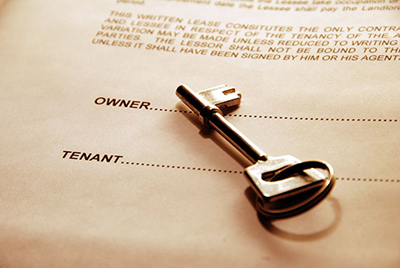
You’ve signed the lease at your new rental, and sorted out the major issues, from pets to parking. But now that you’re moving in, you’re probably looking at your new digs even more closely, and certain move-in questions have started to arise that you hadn’t thought of before.
Don’t let these uncertainties stress you out. Save that energy for decorating and giving your new pad a personal touch. We’ve got you (and your toilet seat) covered.
Should you change the locks?
It’s normal to be nervous at the thought of a previous renter having a copy of your keys. But as a renter, are you allowed to change the locks, and how do you know if your landlord took care of it? In most provinces, tenants can’t change the locks without permission. The landlord needs a key for emergency repair access, like a gas leak or burst water pipe. Look over your lease carefully, and if you don’t see a specific mention about new locks on your doors, ask.
Should you change the toilet seats?
Whether for cosmetic or hygienic reasons, replacing a toilet seat is one of the easiest, most budget-friendly upgrades you can make to your newly rented apartment or home. Just be sure to store the old toilet seat in a safe spot in case you want to swap it out when you move. However, there are benefits to letting your landlord in on your desire — you may end up not having to pay at all. Landlords may be happy to pay out of pocket for this expense, filing it under low-cost improvements that make tenants happy. So before you fork over the cash, ask your landlord if they’d be willing to make the swap for you.
Can you plant a garden if the lawn is your landlord’s responsibility?
Generally, tenants are not allowed to alter a rental property’s landscaping without the landlord’s permission. Even if you think it adds value to put in a raised-bed garden in the front yard of your rented townhouse, your landlord might disagree. If you can’t bribe them with your beautiful homegrown heirloom tomatoes, look for a middle ground. Try a container garden or hanging garden (perfect for apartments too), or find an area to plant within an existing flower bed. No matter what agreement you come to with your landlord, be sure it’s in sync with your city’s regulations.
Should you document pre-existing damage?
Yes! Take move-in
photos as documentation — even landscape shots if you’re responsible for lawn care. Take time to look, because you can bet the landlord will look in the oven and every cupboard when you move out. The big money for damages, though, is on the floor. Any stains, tears, rips, burns on carpet/wood/tile — get a good picture upon move-in. In addition to images, it’s a good idea to note any damage on the landlord’s move-in checklist. If there isn’t a checklist, make your own, sign it, and date it.
Can you be an Airbnb host?
Your new neighborhood is a hot spot for tourists and businesspeople, and your apartment is cozy and adorable. Why not make money on your in-demand location? While most leases clearly state whether long-term subleasing is permitted, there’s a little more gray area when it comes to the peer-to-peer renting of a room while the original tenant still inhabits the apartment. Regardless of whether it’s covered in your lease, many renters (i.e., your neighbors) find this to be a security issue and don’t want it in their buildings. And even though some landlords allow this, they require a percentage of the income from the
Airbnb renters. Consider the potential ramifications before you list a room.
What’s OK for my landlord to take from my deposit?
While this is traditionally a move-out question, it’s important to keep it in the back of your mind from the moment you move in: How much of your
deposit is your landlord allowed to keep, and why? Although laws vary by province, one fairly constant thread is that landlords can deduct money for damage but not normal wear and tear. The difference can sometimes be blurry, but the rule of thumb is that ‘damage’ is from a single incident (burn hole in the carpet), whereas ‘normal wear and tear’ is caused by average daily use (discoloration in the carpet due to heavy foot traffic). Damages caused by things out of your control (i.e., weather, fire, and vandalism) cannot be taken out of your deposit.
What questions did you have about your new apartment during move-in? Share in the comments!